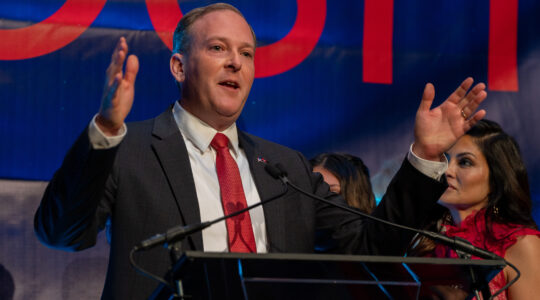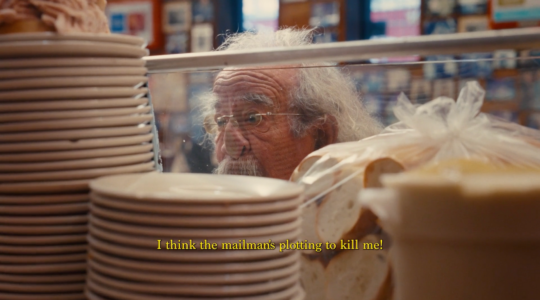Even as the Foundation for Jewish Culture embarks on an ambitious season of programming this fall, its board of directors, faced with ongoing financial shortfalls, has voted to go out of business next year, The Jewish Week has learned.
The New York-based foundation has been the country’s leading resource and advocate for Jewish culture and creativity in the United States for more than 50 years.
Elise Bernhardt, its president and CEO, said in an interview prior to the formal announcement of the closing this week that over the next year her job, and that of her staff, will be to find homes for some of the foundation’s successful programs in mission-compatible organizations around the country.
“The positive news is that we have created so many wonderful programs,” said Bernhardt, who has led the foundation for the last seven years. “And the sad news is that there may not be any one organization to take on all that we do.”
Four NFJC fellows will begin 10 weeks of residency in Jerusalem next month as part of the American Academy in Jerusalem, a recent addition to the foundation’s portfolio. And nine fellows of the Six Points Fellowship for Emerging Artists, an innovative partnership program, are about to go into production on their projects in Los Angeles. (The New York branch of Six Points closed this year due to lack of funding.)
The New Jewish Culture Network, formed by the foundation, will launch a months-long tour next March of a multi-media performance exploring the Sarajevo Haggadah’s history.
The foundation, which invests in creative individuals through grants, scholarships and awards in the fields of film, music, dance, literature, art and scholarship, has been praised for its impact, leveraging relatively small grants to provide key support at critical times in the lives of young artists. It has also been criticized in some circles for helping to fund some films that take a critical look at Israel.
The foundation, which was created in 1960 by the Jewish federation system, appears to be the victim of philanthropic contraction at a time of declining support for national Jewish organizations.
Major funders tend to donate to specific creative projects, which they find far more appealing than organizational overhead, observers say.
In addition, “‘national’ may not be the strategy anymore,” Bernhardt said, noting that donors also prefer to support programs in their own communities. “And culture is always last on the list,” she added, citing a 2012 study on Jewish giving that found only 1 percent of Jewish charitable giving going for cultural programs.
The projected budget for the foundation this year was approximately $2 million, and while the funds raised came close to that figure, it was determined that the long-term prognosis was not good. One staff member had been let go and others who left on their own were not replaced. Five employees are now in the New York office and one is in Los Angeles.
Allocations to the foundation from the Jewish Federations of North America’s National Federation/Agency Alliance, which has dramatically cut giving to all its beneficiaries, had steadily decreased over the last several years from about $700,000 a year to about $150,000. Another Alliance beneficiary, the Jewish Education Service of North America (JESNA), closed this summer.
Support the New York Jewish Week
Our nonprofit newsroom depends on readers like you. Make a donation now to support independent Jewish journalism in New York.
Meetings were held over the last few months internally within the Foundation for Jewish Culture to discuss options, and potential major donors were approached. But none were prepared to make a contribution significant enough to reverse the tide.
Ironically, the FJC move comes as Mayor Michael Bloomberg has funded New York cultural institutions generously during his 12 years as mayor, as Jewish culture has been seen as an increasingly important entry point for engaging younger Jews and as a just-released study of wealthy “next-gen” philanthropists reveals that 44 percent give to arts and culture causes.
“What would Bezalel think?” Bernhardt asked rhetorically, referring to the biblical artist assigned by God to create the Mishkan, or tabernacle, when the Israelites wandered in the desert for 40 years. “He was the ultimate multimedia artist — blessed with craft, wisdom and divine inspiration.” Without his work, she observed, there would be no Mishkan, no place for collective worship, no community.
Bernhardt liked to cite the Bezalel story in talks to potential supporters, asserting that he and those like him create community through their talents, which often are under-appreciated.
“If I’m sad about anything it’s that I wasn’t able to make the case of the centrality of the Jewish artist to the whole enterprise,” she said.
Judith Ginsberg, immediate past chair of the foundation, echoed Bernhardt’s observation that “people are more inclined to support local projects these days.
“Things change,” she said, noting that younger Jews are less interested in affiliating with and supporting national Jewish organizations.
While she takes great pride in the accomplishments of the foundation over the years in supporting artists and scholars, Ginsberg believes there is too much duplication in the organized Jewish community, and that the focus now should be on ensuring the survival and sustainability of the foundation’s programs.
“It’s not a tragedy,” she said. “It’s a smart move; it’s the programs that are important.”
Allen Greenberg, co-chair of the foundation, agreed, and expressed confidence in maintaining the work of the foundation, albeit “in a different format.”
Among the programs the foundation invests in are a fund for Jewish documentary filmmakers, prizes in Jewish fiction and nonfiction for emerging writers, a fund to support scholars’ dissertations, and grants for Jewish theater projects.
Lori Starr, executive director of The Contemporary Jewish Museum in San Francisco, says the foundation excelled in the role of catalyst, to the extent that it “put itself out of business, in the best sense of the word.
Support the New York Jewish Week
Our nonprofit newsroom depends on readers like you. Make a donation now to support independent Jewish journalism in New York.
“To its great credit,” she said, the foundation has “done the transformative work that it has, helping museums like mine and others, and Jewish community centers, develop an institutional commitment to Jewish culture.”
She credited Bernhardt for having “the passion to bring new art into the world” and the foundation for “raising the bar high.”
Foundation co-chair Greenberg said one indication of the organization’s legacy will be evident in the coming months as it seeks to find homes for its varied programs.
“Check back with me then,” he said, “to see how we’ve done.”
The New York Jewish Week brings you the stories behind the headlines, keeping you connected to Jewish life in New York. Help sustain the reporting you trust by donating today.




